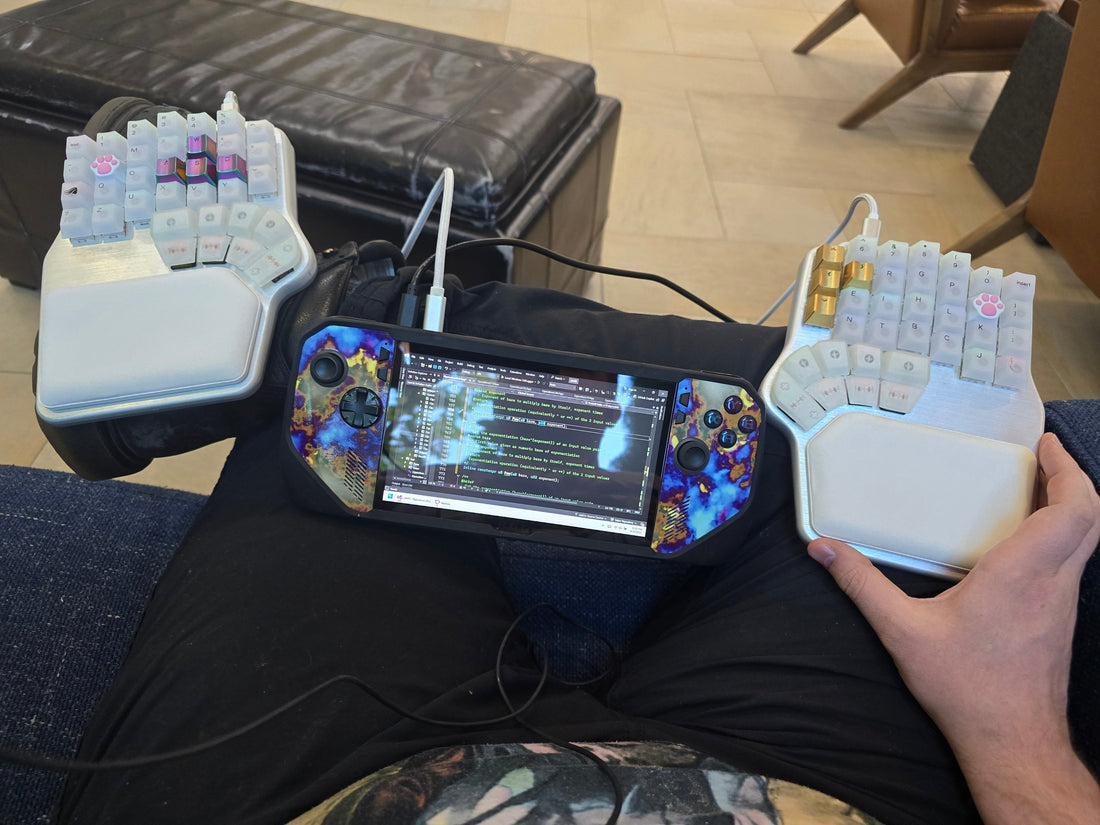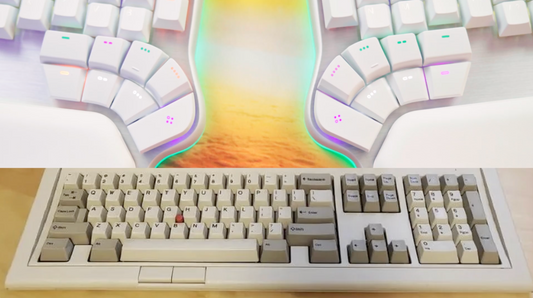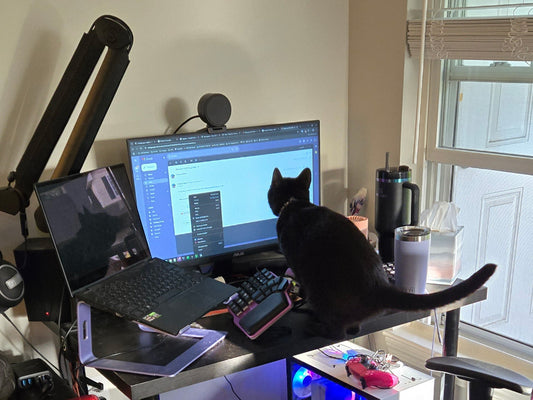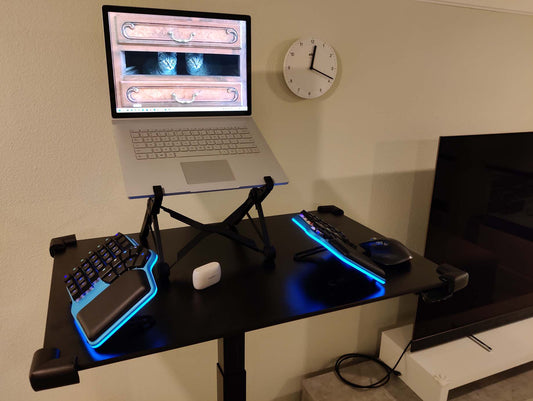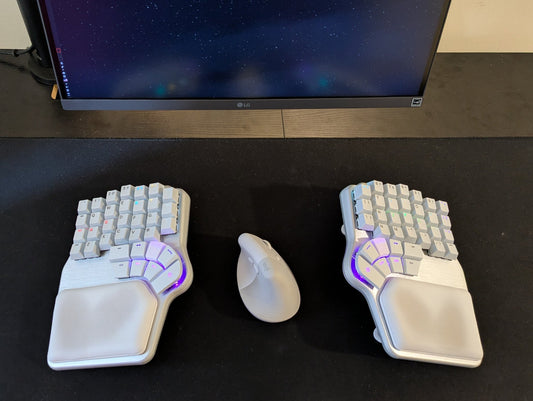👋 About Ari
Hi! I’m Ari Surprise, based in Mill Creek, WA, USA. I’ve worked as a Technical Artist & Graphics/Tools Programmer, though I’m currently on leave as a stay-at-home parent.
I’m a passionate retro gamer — that hobby is what first pulled me into the games industry. Over time, I transitioned from art to tech art, then to tools programming, and eventually to graphics programming. My journey has been shaped by my obsession with technical details that slow me down, which led me down the rabbit hole of re-designing and re-tooling fundamentals to improve my workflows.
What makes me unique? I bring an unusual mix of lateral experience into my work, which gives me fresh perspectives when I rethink and redesign the software layers I build on.

🚀 Ari's Ergonomic Journey
Before Dygma, I experimented with layouts like Dvorak (left-handed variants), Colemak, Workman, and Engram. But none fully solved my ergonomic needs. Split and columnar designs seemed logical, so when I discovered the Defy — with its flexibility and customization potential — I knew it was worth trying.
I deal with RSI pain in my index and middle carpals, which makes most mouse alternatives unusable. On top of that, working as a parent of toddlers means I often need to suddenly switch to one-handed workflows or lock the keyboard from curious fingers.
The Defy allowed me to design layer structures that solved those challenges: mirrored layers for hand-swapping, mouse-emulation in a pinch, lockout layers to prevent toddler chaos, and even custom layouts that smoothed out all my workflows ergonomically.
“While my ideal workday may be much less punctuated than life presently allows, the Defy has facilitated working in many more situations than I was ever actually able to otherwise work at all.”
Ideally, I can sit down, turn on music, plug in & hyperfocus for hours, allowing that to happen more efficiently. However, the real selling point has been how many other situations can be accommodated fully to work well in less ideal locations.
I code mostly in C++, switching between VS Code and Visual Studio depending on the platform. For 3D work, I use Maya or Blender; for 2D art, I use Photoshop or Krita; and occasionally, Substance or Houdini. Audio work I handle at a more technical level. So, beyond the setup, what truly stands out is how I keep my workflow consistent across environments — from a standing desk to the couch, even while juggling parenting.
🌐 Connect with Ari
You can connect with Ari on LinkedIn. Feel free to reach out if you’d like to chat about tech art, tools programming, ergonomics, or retro gaming.
Thanks, Ari!
Your story shows how ergonomics, creativity, and adaptability can come together — whether in the studio, on the couch, or with toddlers in the mix. The way you’ve reimagined your tools to fit your life is truly inspiring.
Do you have a good story about you and your Dygma Keyboard? Fill out our survey and share it with us!
